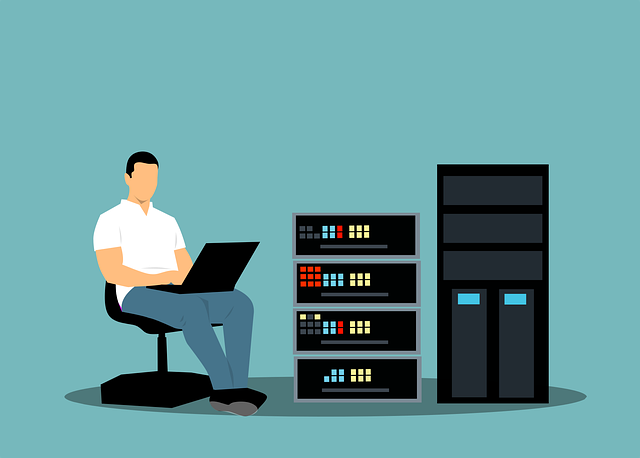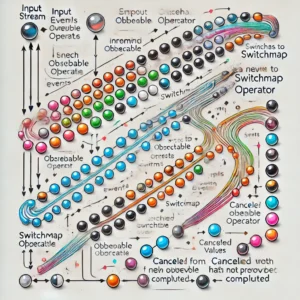When building a new application, one of the most critical decisions developers must make is choosing the right database. There are two primary types of databases: SQL and NoSQL. Each type has its strengths and weaknesses, and choosing the right one can significantly impact the application’s performance, scalability, and cost.
SQL databases are the traditional, relational databases that have been around for decades. They are best suited for applications that deal with structured data, such as financial transactions or inventory management. SQL databases use a schema to define the structure of the data, which makes it easy to ensure data integrity and enforce constraints. However, SQL databases can be challenging to scale, and they are not well-suited for handling unstructured data.
On the other hand, NoSQL databases are designed to handle unstructured and semi-structured data. They are more flexible than SQL databases and can handle a wide range of data types, including text, images, and videos. NoSQL databases are easier to scale horizontally, making them well-suited for applications that require high scalability. However, NoSQL databases can be more challenging to manage, and they may not provide the same level of data integrity and consistency as SQL databases.
Understanding Databases
Databases are an essential part of modern software development. They are used to store, organize, and manage data. There are two main types of databases: SQL and NoSQL. SQL databases are based on the relational data model, while NoSQL databases are not.
SQL Databases
SQL databases are based on the relational data model. They use tables to store data, with each table consisting of rows and columns. Each row represents a single record, while each column represents a field of data. SQL databases are best suited for structured data, which means data that is organized in a predefined way. They follow a rigid schema that defines the structure of the data.
SQL databases are highly popular and widely used. They are known for their reliability, consistency, and ease of use. They are also highly scalable, which means they can handle large amounts of data and traffic.
NoSQL Databases
NoSQL databases are not based on the relational data model. Instead, they use a variety of data models, such as document, key-value, and graph. NoSQL databases are suitable for structured, semi-structured, and unstructured data. They do not follow a rigid schema but instead have more flexible structures to accommodate their data types.
NoSQL databases are highly scalable and can handle large amounts of data and traffic. They are also highly flexible and can adapt to changing data requirements. They are often used in modern web applications, which require high performance and scalability.
Choosing the Right Database
Choosing the right database depends on the specific needs of the application. SQL databases are best suited for structured data, while NoSQL databases are suitable for structured, semi-structured, and unstructured data. SQL databases are highly reliable and consistent, while NoSQL databases are highly scalable and flexible.
When choosing a database, it is important to consider factors such as data structure, scalability, performance, and ease of use. It is also important to consider the specific needs of the application, such as the type of data being stored and the expected traffic and usage patterns.
Overall, both SQL and NoSQL databases have their strengths and weaknesses. Choosing the right database requires careful consideration of the specific needs of the application.
SQL Databases: An Overview
Features of SQL Databases
SQL databases are relational databases that store data in tables with predefined schemas. They use Structured Query Language (SQL) for managing and querying data. SQL databases are best suited for structured data that follows a defined schema.
Relational data model
In a SQL database, data is organized into tables that are related to one another through common fields. The relational data model allows for efficient data storage, retrieval, and manipulation.
Structured Query Language (SQL) for managing and querying data
SQL is a programming language used for managing and querying data in SQL databases. It allows for efficient data retrieval and manipulation through various commands such as SELECT, INSERT, UPDATE, and DELETE.
Table-based structure with predefined schemas
SQL databases use a table-based structure with predefined schemas to store data. This means that the structure of the database is fixed, and any changes to the schema require careful planning and execution.
ACID properties
SQL databases are known for their ACID properties. ACID stands for Atomicity, Consistency, Isolation, and Durability. Atomicity ensures that transactions are treated as a single unit of work, while consistency ensures that the database remains in a valid state after each transaction. Isolation ensures that transactions are executed independently of one another, while durability ensures that changes made to the database are permanent and survive system failures.
Pros and Cons of SQL Databases
SQL databases are well-suited for structured data that requires a fixed schema and strong data consistency. They are widely used in enterprise applications and are known for their reliability and data integrity. However, they can be rigid and difficult to scale, and changes to the schema can be time-consuming and complex.
NoSQL Databases: An Overview
NoSQL databases are non-relational databases that provide an alternative to traditional relational databases. They are designed to handle large volumes of unstructured or semi-structured data, making them ideal for big data applications. NoSQL databases are horizontally scalable, meaning they can handle large amounts of data by adding more servers to the database cluster.
Features of NoSQL Databases
NoSQL databases have several features that make them unique and different from traditional SQL databases. Some of these features include:
Diverse data models
NoSQL databases offer a variety of data models, such as document, key-value, columnar, and graph etc. Each data model is designed to handle specific types of data and use cases. For example, a document database is ideal for storing and querying JSON documents, while a key-value database is suitable for caching and session management.
Flexible schema or schema-less design
NoSQL databases have a flexible schema or schema-less design, which means that the database can store data without a predefined schema. This allows for more flexibility in data modeling and makes it easier to handle unstructured data.
Variety of query languages or APIs
NoSQL databases offer a variety of query languages or APIs, which makes it easier to work with different types of data. For example, MongoDB uses the MongoDB Query Language (MQL), while Apache Cassandra uses the Cassandra Query Language (CQL).
BASE properties
NoSQL databases follow the BASE (Basically Available, Soft state, Eventually consistent) properties, which means that the database sacrifices consistency for availability and partition tolerance. This allows for better scalability and performance in distributed environments.
Pros and Cons of NoSQL Databases
NoSQL databases have several advantages and disadvantages, which include:
| Pros | Cons |
|---|---|
| Scalability | Lack of ACID compliance |
| Flexibility | Limited query functionality |
| High availability | Steep learning curve |
| Performance | Lack of standardization |
| Cost-effective | Limited community support |
Overall, NoSQL databases are a great choice for applications that require scalability, flexibility, and high availability. However, they may not be suitable for applications that require complex queries, strict consistency, or strong data integrity.
Comparing SQL and NoSQL Databases
When it comes to choosing the right database, the decision often comes down to SQL versus NoSQL. Both database types have their strengths and weaknesses, and the choice depends on the specific needs of the project. In this section, we will compare SQL and NoSQL databases based on performance, scalability, complexity, and data structure.
Performance
SQL databases are known for their strong performance in handling complex queries and large datasets. They are optimized for transactional processing, making them ideal for applications that require real-time updates and consistency. SQL databases use a structured query language, which allows for efficient indexing and retrieval of data.
On the other hand, NoSQL databases are designed for high-speed, high-volume data processing. They are optimized for read-heavy workloads, making them ideal for applications that require fast and flexible data access. NoSQL databases use a variety of data models, including document, key-value, and graph, which allows for more flexible and scalable data storage.
Scalability
SQL databases are vertically scalable, which means that they can handle increased traffic by upgrading to a more powerful server. However, this can be expensive and may require downtime during the upgrade process. NoSQL databases, on the other hand, are horizontally scalable, which means that they can handle increased traffic by adding more servers to the database cluster. This makes them more flexible and cost-effective in handling large amounts of data.
Complexity
SQL databases have a well-defined schema, which means that the data must be structured before it can be stored in the database. This can be time-consuming and requires a high level of expertise in database design. NoSQL databases, on the other hand, have a flexible schema, which means that the data can be stored in a more natural format. This makes them easier to use and more flexible in handling unstructured or semi-structured data.
Data Structure
SQL databases use a relational data model, which means that the data is organized into tables with predefined relationships between them. This makes them ideal for applications that require complex queries and data analysis. NoSQL databases, on the other hand, use a variety of data models, including document, key-value, and graph, which allows for more flexible and scalable data storage.
In summary, the choice between SQL and NoSQL databases depends on the specific needs of the project. SQL databases are ideal for applications that require real-time updates and complex queries, while NoSQL databases are ideal for applications that require fast and flexible data access. Ultimately, the decision should be based on factors such as performance, scalability, complexity, and data structure.
Factors Influencing the Choice
When choosing between SQL and NoSQL databases, there are several factors to consider. The following sub-sections will explore some of the most important factors to consider when making this decision.
Querying Capabilities
One of the most significant differences between SQL and NoSQL databases is their querying capabilities. SQL databases are well-suited for complex queries that involve multiple tables and relationships. On the other hand, NoSQL databases are designed to handle unstructured data and are optimized for simple queries.
Data Model Requirements
Another important factor to consider when choosing between SQL and NoSQL databases is the data model requirements of your application. If your application requires a highly structured data model, then SQL databases may be the better choice. If you need more flexibility in your data model, then NoSQL databases may be a better fit.
Flexibility and Schema Design
NoSQL databases are known for their flexibility and schema-less design. This means that you can store data in a NoSQL database without first defining a schema. This can be helpful if you have data that is constantly changing or if you need to store data in a format that is not well-suited for a traditional relational database. SQL databases, on the other hand, require a well-defined schema before data can be stored.
Evaluating Your Resources
Another important factor to consider when choosing between SQL and NoSQL databases is your available resources. SQL databases typically require more resources, such as CPU and memory, to operate efficiently. NoSQL databases, on the other hand, are designed to scale horizontally and can often be run on commodity hardware.
Examples of SQL Databases
-
- MySQL is an open-source relational database management system (RDBMS) known for its speed, reliability, and ease of use.
- It is commonly used in web applications and is a popular choice for small to medium-sized projects.
-
- PostgreSQL is another open-source RDBMS that is highly extensible and supports advanced data types and features.
- It is known for its robustness and is often used in large-scale applications, data warehousing, and geospatial databases.
-
- Microsoft SQL Server is a commercial RDBMS developed by Microsoft.
- It is known for its integration with other Microsoft products and is widely used in enterprise-level applications and data analytics.
-
- Oracle Database is a commercial RDBMS known for its scalability, security, and high-performance capabilities.
- It is often used in large enterprises and mission-critical applications.
-
- SQLite is a self-contained, serverless, and zero-configuration SQL database engine.
- It is commonly used in embedded systems, mobile applications, and desktop software due to its small footprint.
-
- IBM Db2 is a family of data management products, including both relational and non-relational databases.
- It is used in various industries, including finance, healthcare, and logistics.
Amazon RDS (Relational Database Service):
-
- Amazon RDS is a managed database service provided by AWS that supports various database engines, including MySQL, PostgreSQL, SQL Server, and Oracle.
- It simplifies database administration tasks and is often used in cloud-based applications.
-
- MariaDB is an open-source RDBMS that is a fork of MySQL.
- It is designed to be a drop-in replacement for MySQL and is known for its performance and security enhancements.
Examples of NoSQL Databases
-
- MongoDB is a popular document-oriented NoSQL database.
- It stores data in flexible, JSON-like documents, making it well-suited for projects with evolving schemas and high-speed data retrieval.
-
- Apache Cassandra is a distributed NoSQL database designed for scalability and high availability.
- It excels in handling large amounts of data across multiple commodity servers and is often used in applications requiring real-time data processing.
-
- Redis is an in-memory key-value store known for its blazing-fast data retrieval capabilities.
- It is frequently used for caching, real-time analytics, and message brokering due to its low-latency and high-throughput characteristics.
-
- Couchbase is a NoSQL database that combines the flexibility of JSON documents with the performance of key-value stores.
- It’s used in applications requiring sub-millisecond response times, such as e-commerce and online gaming.
-
- DynamoDB is a managed NoSQL database service provided by AWS.
- It offers seamless scalability and is suitable for applications with variable workloads and high availability requirements.
-
- Neo4j is a graph database designed for storing and querying data with complex relationships.
- It is commonly used in applications involving social networks, recommendation engines, and network analysis.
-
- Apache HBase is a distributed, column-oriented NoSQL database built on top of Hadoop’s HDFS.
- It is used for handling large-scale, sparse data sets and is commonly used in big data analytics.
-
- Riak is a distributed NoSQL database known for its fault tolerance and scalability.
- It’s suitable for applications where data consistency and availability are critical, such as in financial services.
Understanding Your Use Case
Finally, it is important to understand your use case when choosing between SQL and NoSQL databases. If you need to store and query highly structured data, then SQL databases may be the better choice. If you need to store and query unstructured data or have a need for high scalability, then NoSQL databases may be the better choice.
SQL Use Cases
- E-commerce Platforms: SQL databases are often used to manage product catalogs, inventory, and customer orders. The structured nature of SQL tables allows for efficient management of products, pricing, and transaction records.
- Financial Systems: For applications that require strict data consistency and integrity, such as banking and financial systems, SQL databases are preferred. The ACID properties ensure that transactions are reliably processed and data remains accurate.
- Enterprise Resource Planning (ERP) Systems: ERP systems handle various business processes like inventory management, supply chain, and customer relationship management. SQL databases can effectively store and retrieve structured data related to these processes.
- Human Resources Management: SQL databases are used to store employee records, payroll data, attendance information, and other HR-related information. Well-defined schema structures help manage this data efficiently.
- Content Management Systems (CMS): While content can be diverse, a CMS often requires structured data for elements like articles, images, and metadata. SQL databases facilitate effective content organization, search, and retrieval.
- Data Warehousing: For analytical processing and reporting, SQL databases are used to create data warehouses. These warehouses consolidate data from various sources, enabling complex querying and analysis.
- Customer Relationship Management (CRM): SQL databases help manage customer profiles, interactions, and sales data. This structured approach enhances customer service and sales insights.
- Reservation Systems: Applications like hotel reservation systems benefit from SQL databases due to their ability to manage room availability, booking records, and guest information.
- Educational Institutions: Student records, course schedules, exam results, and academic data are often managed using SQL databases, as they provide a structured way to organize and query educational information.
- Inventory Management: SQL databases are used in warehouses and retail systems to track inventory levels, stock movement, and reorder points, ensuring efficient supply chain operations.
In these scenarios, the predictable structure and well-defined relationships in SQL databases contribute to maintaining data integrity and consistency, making them suitable choices for applications where data accuracy and transactional reliability are paramount.
NoSQL Use Cases
- Social Media Platforms: NoSQL databases are ideal for handling user-generated content, user profiles, and interactions. They offer the flexibility to accommodate varying data structures and fast-paced changes.
- Big Data and Analytics: NoSQL databases are often used to store and process large volumes of unstructured or semi-structured data for analytics purposes. This includes data from sources like sensors, logs, and social media.
- Content Management and Delivery: Websites that serve dynamic content, such as news articles, blogs, and multimedia, can benefit from NoSQL databases. They enable efficient storage and retrieval of diverse content types.
- Internet of Things (IoT): IoT devices generate massive amounts of data in different formats. NoSQL databases can handle this data variety and volume, making them suitable for IoT data storage and analysis.
- Real-Time Analytics: NoSQL databases can power real-time analytics platforms by ingesting and processing data streams, enabling businesses to make informed decisions on the fly.
- Graph Databases: Applications dealing with complex relationships, such as social networks, recommendation engines, and fraud detection systems, can leverage graph databases to model and query intricate connections.
- Elastic Scalability: NoSQL databases, particularly those using distributed architectures, are well-suited for applications that require horizontal scalability, enabling seamless growth with increasing demand.
- Session Management: Web applications often need to manage user sessions, shopping carts, and temporary data. NoSQL databases can provide quick read and write access for such dynamic data.
- Personalization and Recommendations: NoSQL databases enable tracking user preferences and behavior, supporting personalized content recommendations and targeted advertising.
- Log and Event Data: NoSQL databases are used to store logs, events, and time-series data. They offer efficient storage and querying for such data, critical for troubleshooting and auditing purposes.
- Document Storage and Collaboration: Collaborative platforms that handle documents, spreadsheets, and other office files can benefit from NoSQL databases, which can store and manage these diverse file formats.
- Gaming: NoSQL databases can support multiplayer game data, player profiles, and game state management in real-time or turn-based gaming scenarios.
In these use cases, NoSQL databases shine due to their flexibility, scalability, and ability to handle unstructured or semi-structured data. They are especially useful when dealing with rapidly changing data requirements and high-speed data ingestion.
In summary, when choosing between SQL and NoSQL databases, it is important to consider factors such as querying capabilities, data model requirements, flexibility and schema design, evaluating your resources, and understanding your use case.
Conclusion
In conclusion, the choice between SQL and NoSQL databases depends on the specific needs of the project. SQL databases are ideal for structured data that requires strict consistency and reliability, while NoSQL databases are better suited for unstructured or semi-structured data that requires flexibility and scalability.
SQL databases are widely used and have been around for several decades. They are known for their reliability, consistency, and ability to handle complex queries. However, they can be costly to scale vertically and may require significant hardware upgrades.
On the other hand, NoSQL databases are relatively new and offer greater scalability and flexibility. They can handle unstructured data, such as social media posts, sensor data, and multimedia files, more efficiently than SQL databases. NoSQL databases can also scale horizontally, which is more cost-effective than vertical scaling.
Ultimately, the choice between SQL and NoSQL databases depends on the specific needs of the project. Factors such as data structure, scalability, consistency, and cost should be carefully considered before making a decision. It is also important to note that hybrid solutions that combine SQL and NoSQL databases are becoming increasingly popular, offering the best of both worlds.
Frequently Asked Questions
What are the advantages of using NoSQL databases over SQL databases?
NoSQL databases offer advantages such as flexibility, scalability, and faster performance. They can handle unstructured data, which is not possible with SQL databases. NoSQL databases can also handle large amounts of data and can scale horizontally, which means that they can add more servers to increase storage and processing power.
When is it best to use SQL instead of NoSQL?
SQL databases are best suited for applications that require complex queries and transactions. They are ideal for applications that require high consistency and reliability. SQL databases are also best suited for applications that have a predefined schema.
What are some examples of NoSQL databases?
Some popular NoSQL databases include MongoDB, Cassandra, Couchbase, and Redis. MongoDB is a document-based NoSQL database, while Cassandra is a column-family database. Couchbase is a key-value store, and Redis is an in-memory data structure store.
What are the disadvantages of using NoSQL databases?
NoSQL databases have some disadvantages, such as limited query functionality and lack of transactional support. They can also be difficult to manage and require specialized skills to set up and maintain. NoSQL databases can also be less mature than SQL databases, which means that they may have fewer features and less community support.
How do SQL and NoSQL differ in terms of system design?
SQL databases are designed to store structured data in tables with predefined schemas. They use a relational model to store data and enforce referential integrity. NoSQL databases, on the other hand, are designed to store unstructured or semi-structured data. They use a variety of data models, including document-based, key-value, and column-family.
What are some common interview questions about SQL and NoSQL?
Some common interview questions about SQL and NoSQL include:
- What is a primary key?
- What is normalization?
- What is a join?
- What is sharding?
- What is the CAP theorem?
- What is the difference between a document-based and a key-value store?
- What is eventual consistency?






